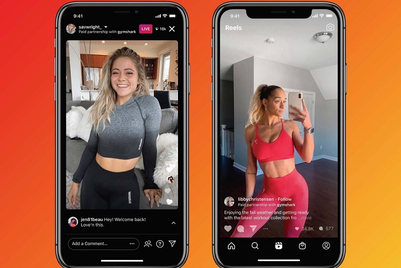
Talking at the Spikes Asia 2012 in Singapore on Sunday, Eric Lee, general manager, JWT Shanghai and Sierna Liu, CEO, Filmworks China, entertainment marketing, said although it is a popular feature in marketing strategies, branded content is not easy.
As well as jostling with the myriad of other brands in the space, marketers will also have to communicate well with filmmakers if they are to manage the polarised views on how brands should be integrated in films.
“Filmmakers will fight to their teeth to protect the integrity of their films but clients don’t mind if the movie is all about their product,”said Lui. “We need communication to help them see things from each other’s point of view.”
The duo shared their top tips on how to create winning branded content and navigate the complex environment.
Create your own thing
In order to stand out from the crowd, brands must aim to create something unique. She pointed to a recent product placement by Chinese milk brand Shu Hua mlk in the Transformer 3: Dark of the Moon movie, which saw an actor slurping on the product and delivering the comedy line, "Let me finish my Shu Hua Milk first”. The line became an overnight sensation and was quickly adopted by Chinese consumers.
Extend and leverage on the properties
Great product placement opportunities are rare, so brands must be open to other options if they can’t source content that is a natural fit. Liu said one example is to leverage movie properties in other ways, pointing to the “Don’t let a phone ruin your movie” campaign by telco Orange. The spoof trailer, which runs in cinemas, was shot on the movie set, included lead actor Jack Black and gave a nod to the story line. “You use everything organically and make a great commercial,” she said. “It feels so real it is almost part of the film.”
Redefine the timeline
The duo said it takes around 18 months to organise a product placement opportunity in a major blockbuster and it requires constant communication between brands and studios. As such, Liu said many brands, including Heineken, hire specialist product placement agencies that have conversations with the studios on a daily basis. “The advantage is it gives a really quick turnaround time and as a result they [Heineken] get placed in top films each year, probably around 30 films annually,” she said.
Be relevant
If brands can’t find relevant existing content they must consider working with media property owners to develop unique content instead, said Lee. He points to the example of a partnership between Rolex and the BBC to create documentary series “The Deepest Dive”. “Media property owners can attract a consumer audience to watch and it is in line exactly with your brand idea.”
Create and curate
Brands must create but they must also act as curators, said Lee. Linking with other brands with different characteristics may result in a more interesting outcome. He points to an example by the link between BandAid and fashion designer Cynthia Rowley to create a “Hurt Couture” campaign, including customised BandAids and the “Glambulance” to rescue fashion emergencies. In a few days the campaign received 80 million media impressions, equivalent to running more than four weeks of TV advertising.
Add value to user generated content
Consumers post reams of content online everyday. But brands must not simply regurgitate it but instead add to it. One example is the “Happy Ribbon” campaign by Uniqlo, which printed consumer comments from Facebook on a ribbon to use at a store opening. “When users generate comment online it’s not just there to share with people, you can make something with it and make it more meaningful in the real world,” said Lee.
Re-engineer the process
Branded content requires a different approach to traditional advertising. The day we launch campaigns we need to keep telling different messages within the same story and continuously bring in new content for continuous consumer dialogue. It also doesn’t have to be 100 per cent perfect, said Lee. “With this new process hopefully we can get a much more interesting campaign,” he said.
Generate long-term effect
The ultimate aim should be to create a long-term platform that does not always rely on outside properties. Clients and agencies should eventually create properties for themselves. “We should treat ourselves as a media property and we can generate our own content,” said Lee.



.jpg&h=334&w=500&q=100&v=20250320&c=1)

.jpg&h=334&w=500&q=100&v=20250320&c=1)
.jpg&h=334&w=500&q=100&v=20250320&c=1)

.jpg&h=334&w=500&q=100&v=20250320&c=1)
.jpg&h=334&w=500&q=100&v=20250320&c=1)








.png&h=268&w=401&q=100&v=20250320&c=1)
